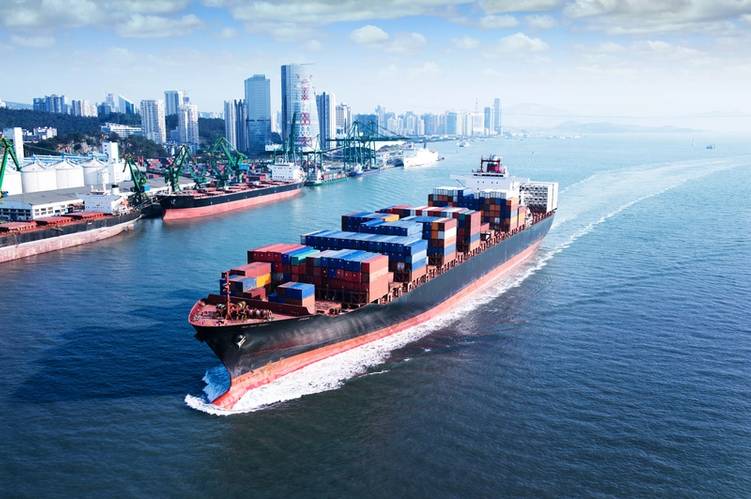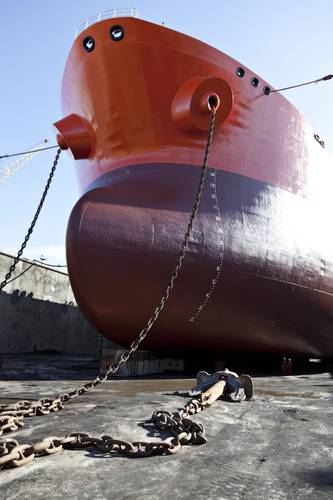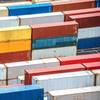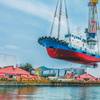Green Marine: Hempel Charts its Growth & Sustainability Course
Hempel announced an ambitious strategy to double its revenue by 2025, with a focus on innovation, digitalization and sustainability. Michael Hansen, EVP & Chief Commercial Officer and Dorthe Scherling Nielsen, Head of Sustainability & Government Affairs discuss the path ahead.
The year 2020 defined by COVID-19 presented historic challenges for many industries, and even companies such as Hempel – with a 105-year history – were not exempt. While the pandemic was (and continues to be for some) all consuming, it is far from the sole challenge for maritime companies today. The industry is at a transcendent point in its history, with digitalization, decarbonization and autonomy effectively challenging long-established norms and redefining the path ahead.
Hempel is a global coating company founded in Copenhagen, Denmark, present globally in four sectors; maritime, infrastructure, decorative and energy. While it had already begun work on its strategy toward growth and sustainability, COVID-19 and the slowdown in 2020 helped to effectively put those plans on the fast track, as the company is aiming to double revenue through refocused geographical priorities, focused segment leadership positions and M&A, while at the same time accelerating on sustainability, innovation and digitalization. “In 2020 we finished the year with a revenue of around 1.5 billion euros, and set on a course towards doubling in size over the next five years,” said Hansen in an interview with Maritime Reporter TV. Hempel was founded in the maritime sector, and today maritime remains a key legacy business, generating around “400 million euros, or (about) a quarter of our revenue,” said Hansen, with energy – both traditional oil and gas the emerging renewables sector – accounting for about 250 million euros per year in turnover, or about 16% of revenues.
Hempel aims to achieve its revenue objective through both acquisitions and organic growth as well as ambitious investments in sustainability, innovation and digitalization, expecting 50 percent of revenue growth to come from M&A, but with a clear-cut emphasis on building market leadership in its four segments. By 2025, Hempel expects more than 50 percent of its revenue to come from sub segments and geographies where it has a leading position, compared to less than 10 percent today.
Among specific targets, Hempel aims to be carbon neutral in own operations by 2025, while helping to reduce the carbon footprint of its customers.
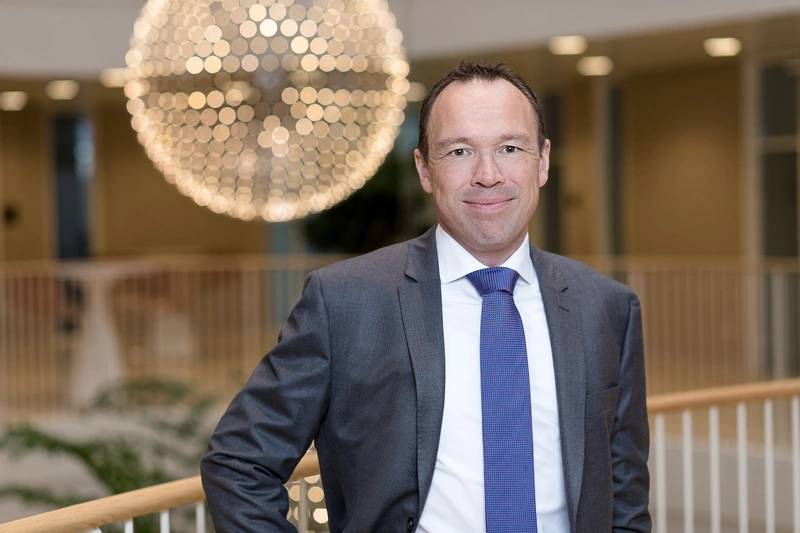 “Hempaguard X7 is a silicon solution that enables a ship to maintain speed level during the five-year intervals between dockings,” said Michael Hansen, EVP & Chief Commercial Officer. “In other words, you reduce your bunker consumption during that period. So here we have the element of sustainability and profitability going hand-in-hand, we're reducing the operational costs of the fleet, and we're significantly reducing the CO2 emission from the vessels.
“Hempaguard X7 is a silicon solution that enables a ship to maintain speed level during the five-year intervals between dockings,” said Michael Hansen, EVP & Chief Commercial Officer. “In other words, you reduce your bunker consumption during that period. So here we have the element of sustainability and profitability going hand-in-hand, we're reducing the operational costs of the fleet, and we're significantly reducing the CO2 emission from the vessels.
“Futureproof”
“One of our key ambitions is to drive CO2 emissions for our own operations to zero by 2025 even as we grow,” said Scherling Nielsen. “To achieve this, we'll do three things. We'll continue to reduce energy consumption, we'll transition to 100% renewable electricity, and we'll shift to electric vehicles and equipment wherever possible. We're also going to work strategically across our value chain to reduce our impact.”
To that end, Hempel launched its sustainability framework dubbed Futureproof, an initiative that lies at the heart of its strategy to double its revenue while dramatically cutting its carbon footprint and that of its clients.
“We have committed to setting science-based targets in accordance with the 1.5 degree pathway. And this will be a really big undertaking for us, a game changer,” said Scherling Nielsen. “It will have a big impact on how we operate our business, how we run our factories, how we select our suppliers and how we produce our products.”
But Futureproof extends far beyond the walls of Hempel, as Scherling Nielsen said “for our customers, we've committed to reducing CO2 with at least 30 million tons. One driver to achieve this goal is products like Hempaguard X7, antifouling with qualities to reduce hull friction and improve fuel efficiency of the ships.”
“Hempaguard X7 is a silicon solution that enables a ship to maintain speed level during the five-year intervals between dockings,” said Hansen. “In other words, you reduce your bunker consumption during that period. So here we have the element of sustainability and profitability going hand-in-hand, we're reducing the operational costs of the fleet, and we're significantly reducing the CO2 emission from the vessels. Over the course of the last six to seven years, more than 2000 ships have applied Hempaguard X7, and in doing so, reducing their emission by more than 20 million tons of CO2.”
One of the conundrums facing all maritime companies today is balancing the need to change and generating the revenue needed for investment in new technologies. According to Scherling Nielsen “Sustainability and profitability are not mutually exclusive.” and in fact sustainability is good business with inherent savings. At the same time, she said that Hempel’s unique ownership structure is a big benefit. “Hempel is owned by the Hempel Foundation, a unique ownership structure that enables us to take a long-term perspective on growth, sustainability, and corporate responsibility.”
While the path to sustainability is taking shape, little is crystal clear. “Sometimes bold decisions will need to be made and bigger investments will likely be needed,” said Scherling Nielsen. “For example, we've asked all our factories to map how they can phase out fuel driven equipment and transition to electric equipment. Also, we will be redirecting existing funds towards more sustainable options, for example, our R&D function will introduce sustainability criteria into their design process.”
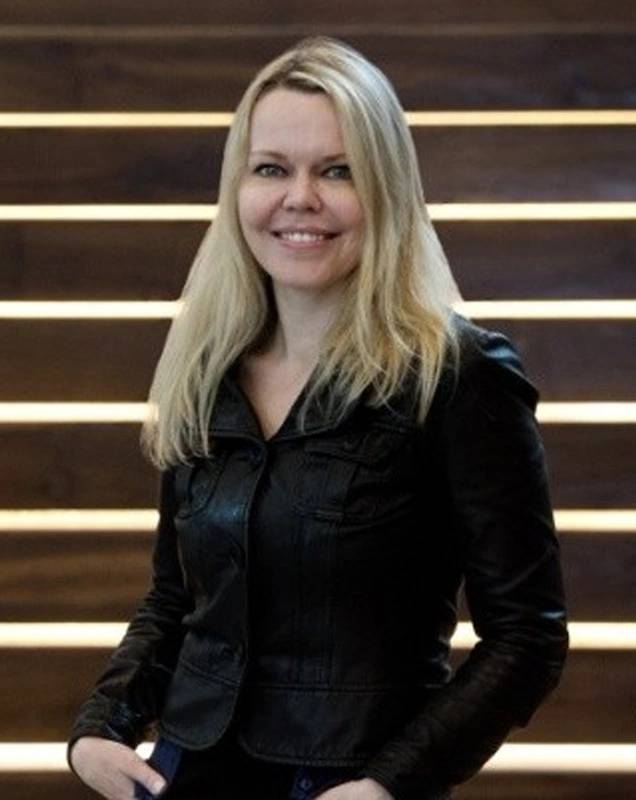 “One of our key ambitions is to drive CO2 emissions for our own operations to zero by 2025 even as we grow,” said Dorthe Scherling Nielsen, Hempel's Head of Sustainability & Government Affairs. “To achieve this, we'll do three things. We'll continue to reduce energy consumption, we'll transition to 100% renewable electricity, and we'll shift to electric vehicles and equipment wherever possible. We're also going to work strategically across our value chain to reduce our impact.”
“One of our key ambitions is to drive CO2 emissions for our own operations to zero by 2025 even as we grow,” said Dorthe Scherling Nielsen, Hempel's Head of Sustainability & Government Affairs. “To achieve this, we'll do three things. We'll continue to reduce energy consumption, we'll transition to 100% renewable electricity, and we'll shift to electric vehicles and equipment wherever possible. We're also going to work strategically across our value chain to reduce our impact.”
R&D
Research and development operations are running at full tilt across industries, as the speed of technology development has effectively cut the lifespan of certain products in half, if not more, during the last decade. Today’s complex problems, particularly on decarbonization, in many cases demand a collaboration among industry stakeholders as well as the need to ‘think outside the box.’
Hempel, too, is taking a hard look at how it develops and delivers solutions to its four key sectors, establishing technology research programs and harnessing Hempel’s new innovation incubator, GrowHub.
Initially Growhub will be an internal effort, as Hempel puts its team together, “but as we progress, we'll be working primarily with our customers to identify the most urgent needs in their respective industries,” seeking to combine efforts and resources to mutual gain, said Hansen. “Traditionally, the coating companies, including Hempel have been incredibly focused on the product side. But with GrowHub we see an opportunity to combine digitization, product development and services too. So if you take these three elements and you put them together in a unique solution, then all of a sudden we can deliver sophisticated solutions supported with data, solutions address both a service need and a product need.”
While the view from every C-Suite is clouded in some way today by COVID, Hansen see plentiful opportunities for Hempel as it embarks on its ambitious path.
“Asia Pacific is already today a key market for us, but it's also a market that we continue to see significant opportunities he said. “In North America, we also see opportunities. We do not today have a strong position in North America, but we are engaged with both the development of renewable energy and the traditional oil and gas sector. I think the combination of those two, is something we're going to see much more of in the coming years as well, where the traditional oil and gas majors will also be engaging in offshore activities, renewable activities. So we see North America as a really important opportunity for us in the coming years.”






